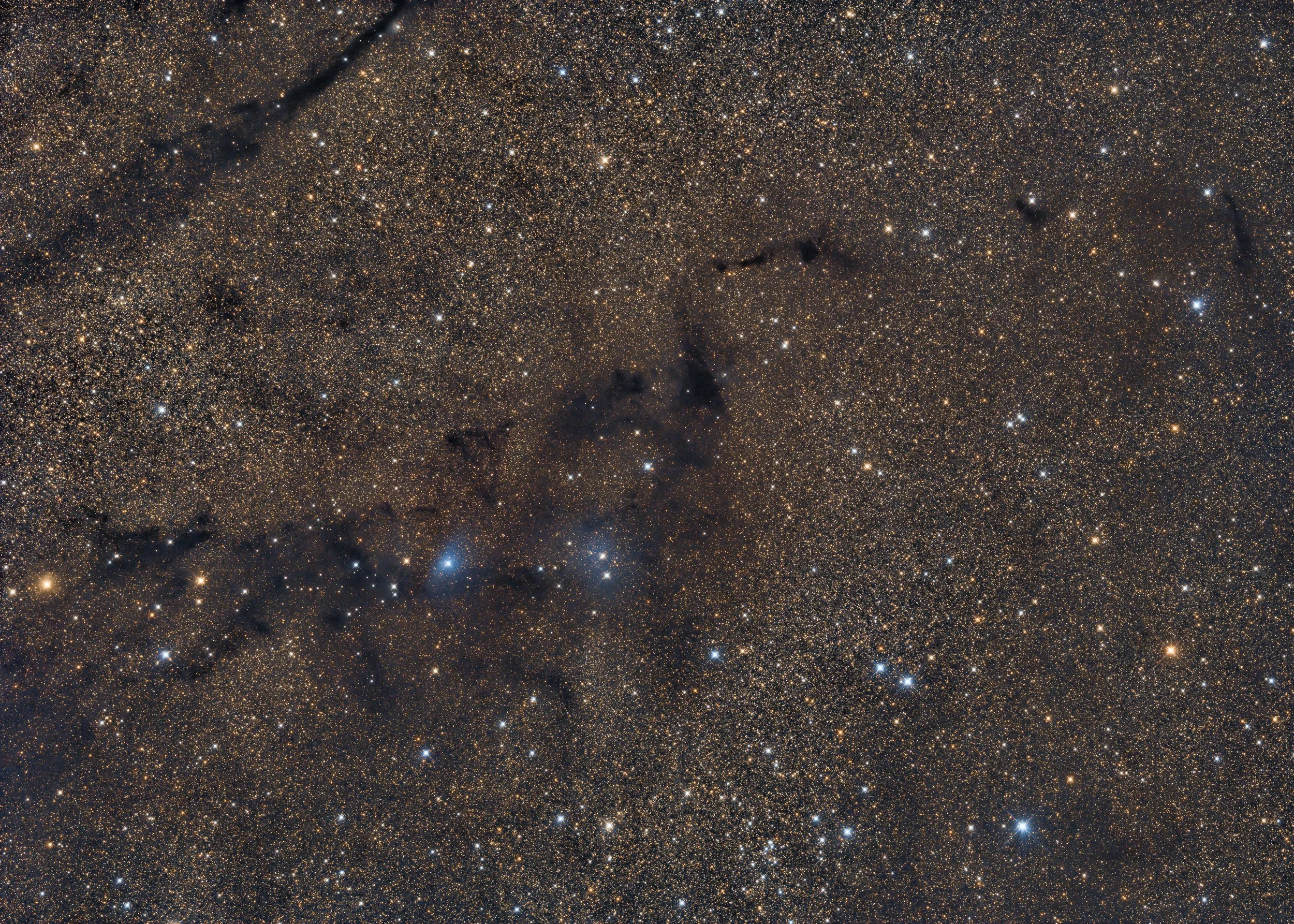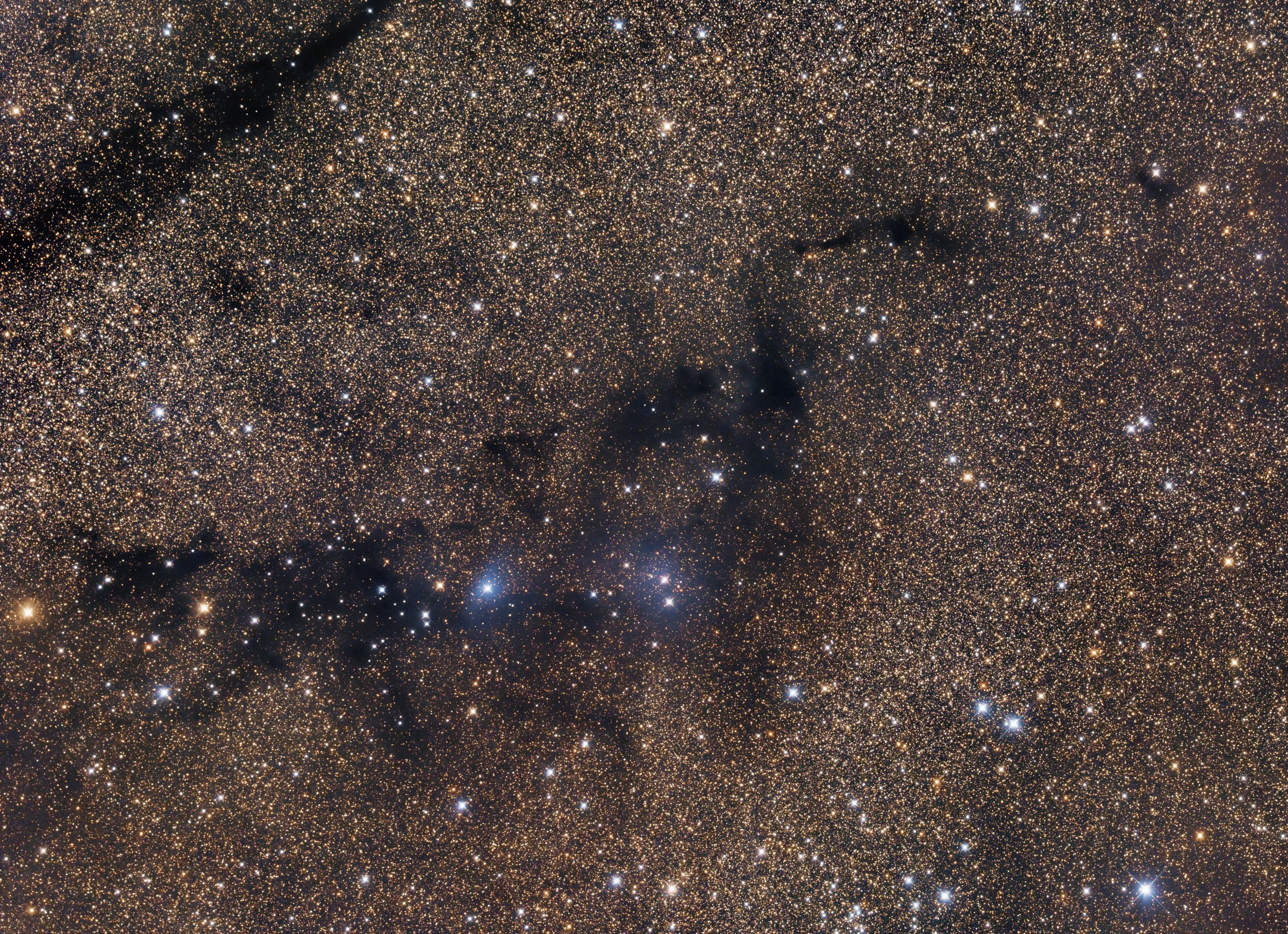
AAPOD2 Image Archives
M44 – The Beehive Cluster
M44, also known as The Beehive Cluster or Praesepe, is an open star cluster located in the constellation Cancer, approximately 610 light-years away. This bright and densely packed cluster consists of several hundred stars, with many being solar-type and red dwarfs, making it one of the closest and most studied open clusters. Visible to the naked eye under dark skies, M44 has been known since antiquity and was cataloged by Ptolemy as a "nebulous mass" before telescopes resolved it into individual stars.
With an estimated age of 600–700 million years, the Beehive Cluster is of significant interest for studying stellar evolution. It shares similarities with the Hyades cluster in Taurus, suggesting a common origin. The cluster’s positioning within the ecliptic means it is frequently occulted by the Moon and occasionally by planets, offering excellent opportunities for observational studies.
LDN 769 / vdB 126 and NGC 6793 - Bejewelled Dust Monsters
LDN 769, vdB 126, and NGC 6793 are part of a fascinating region in the night sky. LDN 769, a dark nebula, obscures the light from the stars behind it, creating a striking silhouette against the backdrop of the Milky Way. Dark nebulae like LDN 769 are composed of dense clouds of gas and dust, which block visible light and are often sites of future star formation.
Adjacent to LDN 769, vdB 126 is a reflection nebula that glows with the light of nearby stars, scattering the light and giving it a distinctive blue hue. NGC 6793, an open star cluster, completes this celestial trio. These clusters contain young, hot stars that illuminate their surroundings, creating a vibrant contrast with the dark nebulae. Together, these objects showcase the dynamic and diverse nature of our galaxy's interstellar medium.
LDN 673 in the Aquila Rift
Lynds Dark Nebula (LDN) 673 is a prominent dark nebula situated within the Aquila Rift, a region rich with interstellar dust and gas clouds. Spanning approximately 7 light-years across and located about 600 light-years from Earth, LDN 673 is a complex structure that obscures the light from background stars, creating an intricate tapestry of dark and light patches in the night sky. This dense molecular cloud is a site of active star formation, with numerous young stellar objects hidden within its veils of dust.
The Aquila Rift itself is a significant feature of the Milky Way, appearing as a dark band that bisects the bright star fields of the constellation Aquila. The rift's dark clouds, including LDN 673, are part of a larger network of star-forming regions that contribute to our understanding of the processes involved in stellar evolution. Observations of LDN 673 and its surroundings provide valuable insights into the initial conditions of star formation and the dynamics of interstellar matter.
NGC 4395
NGC 4395 is an intriguing spiral galaxy located in the constellation Canes Venatici, approximately 14 million light-years away. Despite its relatively close proximity, NGC 4395 is one of the faintest galaxies in the Messier catalog, making it a challenging target for astronomers. This galaxy is classified as a low-luminosity Seyfert galaxy, hosting an active galactic nucleus (AGN) that emits significant radiation, likely due to a supermassive black hole at its center.
Imaging NGC 4395 from a Bortle 7 suburban location in Cork, Ireland, demonstrates the capabilities of modern astrophotography equipment and techniques. Despite the light pollution, the intricate details of this galaxy's structure, including its loose spiral arms and central region, can be captured. NGC 4395's active nucleus and its faint, extended arms provide a fascinating subject for both professional and amateur astronomers, offering insights into the complexities of galactic formation and evolution.
Capella
Capella, the sixth brightest star in the northern hemisphere, takes center stage in this celestial display. The Akira Fuji Effect, a natural occurrence resulting from the star's inherent brilliance and the hazy crystals in the atmosphere, bathes Capella in a radiant aura that sets it apart from both background and foreground stars. This ethereal glow adds a touch of cosmic poetry to the star's luminous presence.
The rapid temperature drop plays a pivotal role in creating the haze of crystals, forming a delicate celestial tapestry that emphasizes Capella's brilliance. As one of the most prominent stars in Earth's night sky, Capella captivates observers with its celestial radiance and unique atmospheric halo, a celestial dance between starlight and the elements.
vdB 126 and LBN 134 among LDN 769 (Racing Sea Horse!)
The dark nebulae LDN 673 (left) and LDN 684, located at 600 light-years in the constellation of Aquila.







